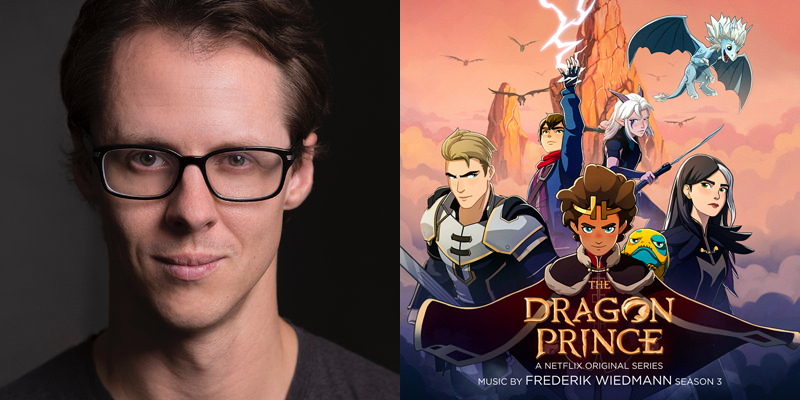
November, 2019. Interview by Randall D. Larson
Q: You’ve recently scored the third season of THE DRAGON PRINCE series, a fantasy computer-animated TV series on Netflix which has given you some great opportunities to score a multi-layered fantasy adventure saga.
Frederik Wiedmann: THE DRAGON PRINCE is an incredible story about wizards, maidens, magic, dragons, elves, knights, kingdoms, betrayal, and family values, so it lends itself to an amazing canvas on which to paint a big, epic orchestral thematic fantasy score. You have to look at it almost like a LORD OF THE RINGS for kids and young adults, although I think it also appeals to a broader audience range. I have an eight-year-old and a six-year-old and they both love the show, but if you look online on twitter there’s a huge fan base of teenagers that are all over the show, so it’s kind of nice to see how it has a big outreach to multiple generations.
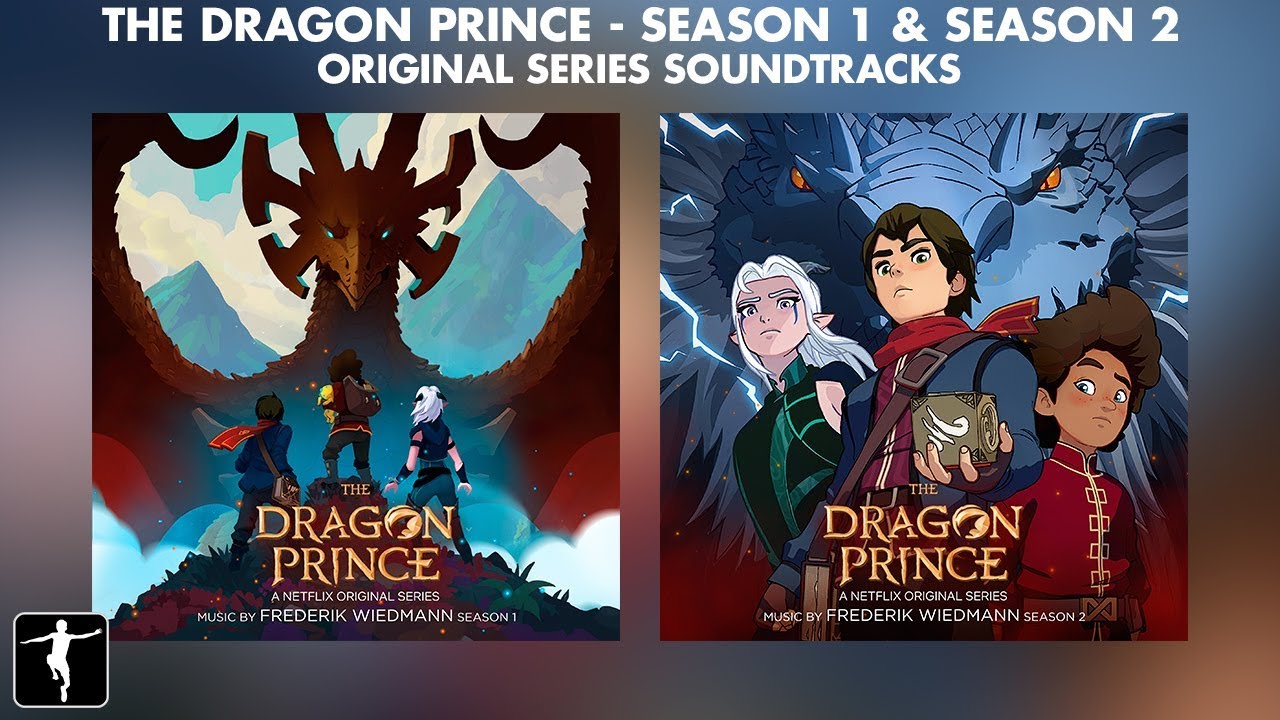
Q: How did you get involved with that project?
Frederik Wiedmann: I was approached by the filmmakers, who I’ve worked with before, about two years ago when they were developing the first few episodes. I ended up writing about 30 minutes of conceptual music even before they had a frame animated, all based on character design and a very broad and rough outline of the story. We wanted to figure out all the themes right off the bat without having to score any scenes yet. That was nice once Episode 1 came in to be scored, since everybody was already familiar with the themes for all the characters. They didn’t have to get used to them at that point, which is what is usually the case when you start a TV show, everybody has to get familiar with all this material before they can really understand what you’re doing.
Listen to the main theme from THE DRAGON PRINCE (Lakeshore Records):
Q: How does Season 3’s score differ from that of the previous two seasons?
Frederik Wiedmann: When Lakeshore Records released the Season 1 and 2 soundtracks last year, each one had a good 50 minutes per season, and then we got to Season 3, which just launched November 22 on Netflix, and it’s a huge showdown of everything that we’ve been building up to in the first two seasons. It’s a longer season and the scale of everything is so much bigger because now all the conflict that’s been set up is finally paying off, and there are big showdowns and big battles. It was hard for us to narrow down the music of Season 3 into a small soundtrack so instead we have a full hour and 40 minutes of music on the album! Since it would be a digital-only soundtrack we didn’t have to worry about our usual 74-minute maximum length for disc, so we made it a very big soundtrack album. A lot of the music is epic, heartbreaking, and emotional, with lots of solo instruments. I’ve got fiddle, cello, ethnic flutes, vocalists, choir, my Armenian duduk is all over the place, and we even recorded a 40-piece orchestra for some key scenes. For Seasons 1 and 2 we hand-picked a few moments that were really important to have played by a live orchestra, as much as the budget would let us. But for Season 3 we were able to do a little more with that.
Listen to “Spread Your Wings” from the DRAGON PRINCE Season 2 (Lakeshore Records):
Q: How does the score’s thematic interplay develop over the arc of the three seasons?
Frederik Wiedmann: It’s been unusual in that they don’t tell me the full story from episode to episode. I’m kept in the dark just like the audience is! So when I came up with themes for the first three episodes of Season 1, I had very little idea of what these themes will have to transform into—I don’t know if this good person may end up being the main villain at the end, or vice-versa, so for me it’s been a little bit of a gamble to start off with material that I think will carry us through the whole season, but at the end of the day I have to adjust to what’s happening on screen. In this case it’s worked out beautiful and all my instincts were spot-on, thankfully, I didn’t have to reverse engineer anything that wasn’t there before. But it’s been nice to be able to follow the story like the audience does, with its unknowing quality, because in that way I don’t end up foreshadowing something that shouldn’t be at that point. It keeps the storytelling from a musical perspective very pure and innocent, which is maybe a good thing.
Q: Apart from that, what have you found most challenging about scoring this long, epic story?
Frederik Wiedmann: Honestly this was just an amazing, fun project to work on. I haven’t found anything particularly challenging about it. It was really just a creative joyride for me to get his score to where it was. A lot of it has to do with the people I work for; they were so receptive and open and appreciative of what I brought to the table that is really makes you want to work on it and go out on a limb and try different things and maybe take a few risks here and there, because you have people with you who appreciate those efforts. Maybe the challenge on this was to keep it sounding as authentic as possible with the means of a synthetic orchestra for most of it. That’s always a big challenge, to make it sound as good as it can—and that’s when I revert back to a lot of live solo instruments because we don’t have the budget for a big symphony orchestra except for a small amount of cues. But that seems to be the thing that works well—one solo cello over some synthetic strings suddenly makes all the difference.
Listen to “Battle of the Storm Spire – The Tide Turns” from the DRAGON PRINCE Season 3 (Lakeshore Records):
Q: Your most recent score in the DC Animated Movie Universe is WONDER WOMAN: BLOODLINES which I like very much….
Frederik Wiedmann: I’ve been very lucky to have been part of this latest string of movies that they’ve done. I made a scorebook for my producer of all of them and I think it’s like 12 movies that are all part of the same universe. An amazing body of work and I’m so grateful that I was able to put my signature on that whole franchise.
Q: Within those 12 films, is each score unique or is there any correlation between the scores with that same universe?
Frederik Wiedmann: If you look at all of the movies together there are only three that stand out as not part of that same universe. All the others – from JUSTICE LEAGUE: FLASHPOINT PARADOX, SON OF BATMAN, BATMAN VS ROBIN, BATMAN: BAD BLOOD, THRONE OF ATLANTIS, WONDER WOMAN, BATMAN: HUSH, WONDER WOMAN: BLOODLINES—and JUSTICE LEAGUE: DARK I didn’t score but that’s also part of it. All those movies have the same voice actors and continuity; they’re all part of the same universe, the same story, the same Batman, and so on. you’ll notice that with HUSH, too where they’re basically trying to take this more-or-less standalone comic but making it be part of this particular universe, so it can be a continuous story of those characters.
I did have to do that on those special movies that Bruce Timm produced, like GOTHAM BY GASLIGHT, which was a complete standalone turn-of-the-Century Batman story in the steampunk era, and JUSTICE LEAGUE: GODS AND MONSTERS a couple years back, where Superman, Wonder Woman, and Batman were entirely different characters with very-different origins, and so those movies kind of stepped out of the norm and needed a completely fresh approach, but everything else is definitely connected musically.
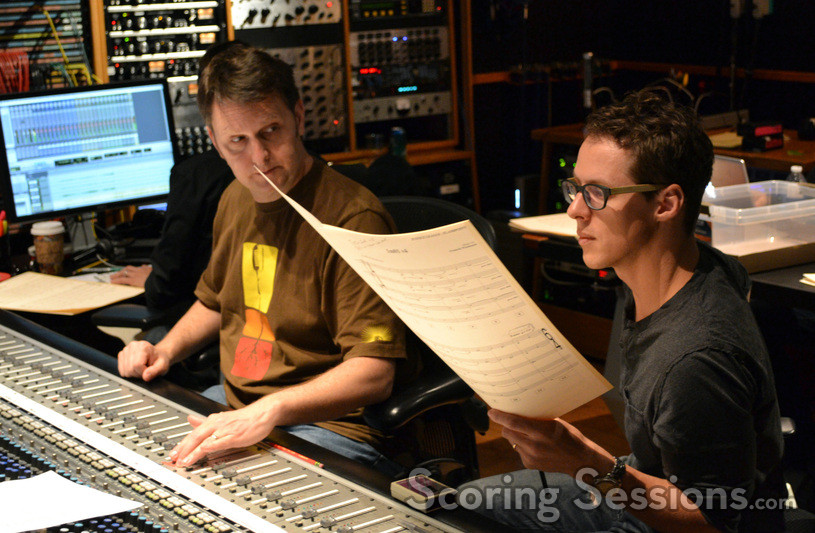
Q: I think it’s rather unique you’ve had that opportunity, because a lot of the other superhero animated films often times have different composers, such as some of the earlier BATMAN films which went through a number of composers with different themes and styles, but here you’ve been able to create a kind of symbiosis between the ones you’ve done.
Frederik Wiedmann: Hopefully I did! It’s more for other people to decide if I’ve succeeded in that. None of this was really a long-term plan from anybody, I don’t think they made the first movie and then somebody said “We’re going to hire the same composer for all of them!” It just kind of unraveled this way, and they wanted me back for the others so in that case it gave me the opportunity to do that.
Q: How would you describe your approach to this new version of WONDER WOMAN in BLOODLINES?
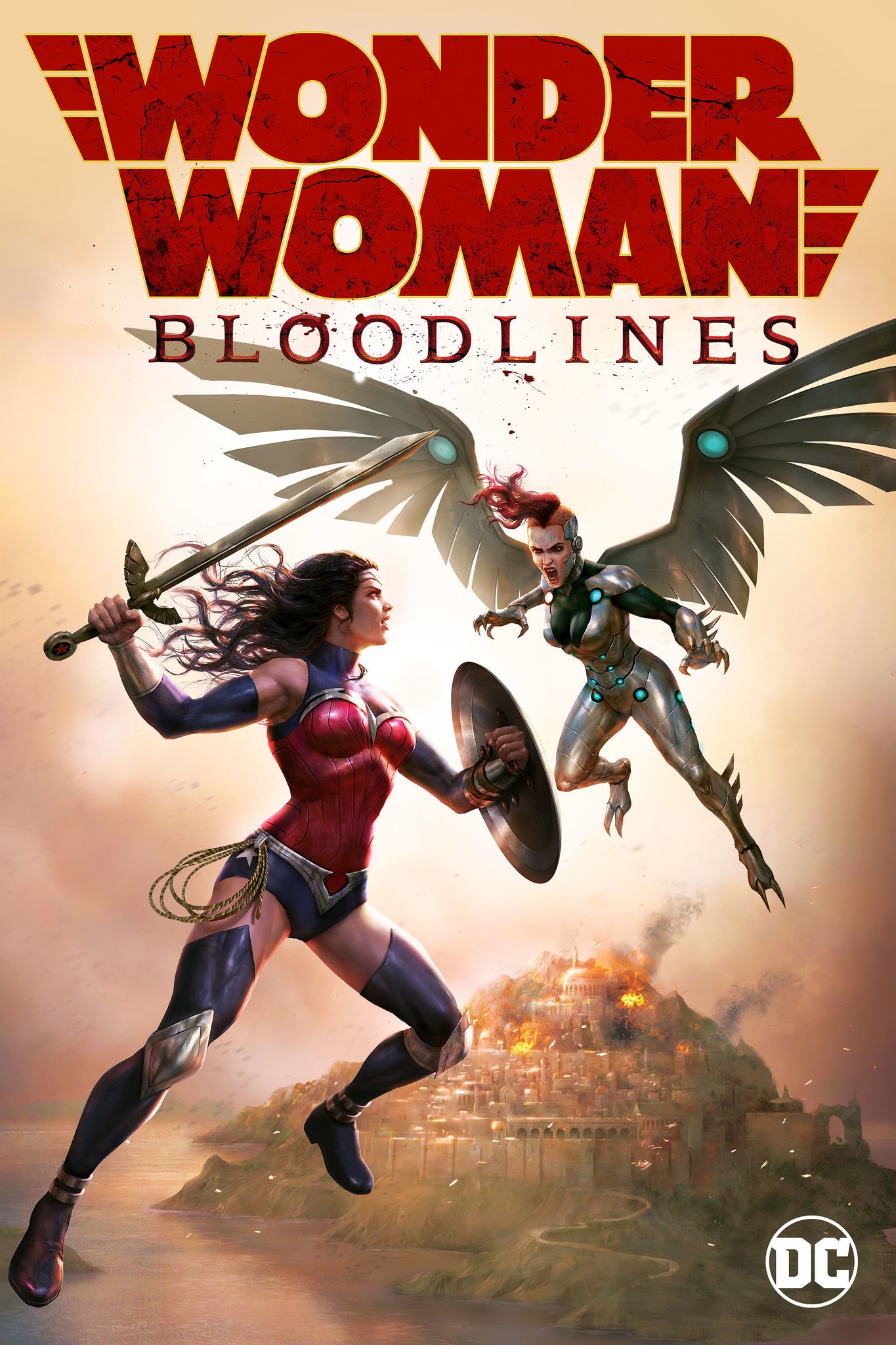
Frederik Wiedmann: There is a moment in DEATH OF SUPERMAN where Superman’s beaten to a pulp by Doomsday, and Wonder Woman is basically coming in and taking charge, even though she knows she’s never going to defeat Doomsday, she’s coming in and flying over Doomsday, landing on the street—there’s a big heroic reveal of her character, and that’s the first time we hear a big Wonder Woman theme. When I started WONDER WOMAN: BLOODLINES, James Tucker [executive producer] and I looked back at that moment, and said “Look, right here is where this whole thing begins with Wonder Woman’s first strong moment in the saga so let’s take what we did here and let’s expand on that.” And that was really the first of her them right there, in that movie. Now fast-forward to WONDER WOMAN: BLOODLINES, I used that theme throughout the film in many, many places; it really was set-up and ready for me to use. And of course there needed to be many other elements to this story, so we wanted to give Thymescera a very ancient musical palette, so I’ve pulled out of few of those ethnic, sort of sounding instruments like dulcimers, harps, flutes, and even an Armenian duduk, an instrument that I love using, it evokes an ancient and slightly tribal feeling, which was something we wanted to have. But then once we get to the real world, it’s very much a pretty straight-up orchestra score, kind of like we’ve been having, once again, making attempts to make this fit into the other universes and stories that we’ve established, to keep it cohesive. But then another big musical element that I wanted to bring in later on was for Medusa, and so we talked about what can be unique that will stand out as something unheard-of so far in these movies. We played around with this fantastic singer, Ayana Haviv, who provided an amazing amount of solo vocal textures for me to work with. And so those became the literal voice of Medusa in the music. It’s unconventional the way I’ve used it—it’s not serial or pretty, it’s more of a dark, somber, also kind of ancient-sounding vocal tone that we created and I think that was very fitting for her character.
Q: How would you describe your other themes, like Cheetah and other characters in the film?
Frederik Wiedmann: I don’t think Cheetah had a specific theme. There was a theme for Vanessa when she’s being introduced as a teenager and she’s growing up and finding out who she is, there’s a theme right there that we introduce early on that then becomes further developed, and it has a nice payoff later when she joins Wonder Woman in the fight against Medusa at the very end.
Q: It’s cool you had a chance to characterize her both as a sort-of innocent teen, then as she turns into evil working for the other woman, and then bring her back into the light, so-to-speak, there’s a nice character arc in the music.
Frederik Wiedmann: That’s right. The theme actually lent itself to becoming darker and then going back as it ended up. That was kind of key to find that melodic line that would work in both worlds.
Q: The animated universe seems to be its own universe apart from the live action films, both in terms of their storyline narrative and the music you’re writing. Have you ever been either inspired or affected by what’s happening in the live action DC universe when you’re getting involved in the animated universe, or are they strictly separate iterations of these characters?
Frederik Wiedmann: I think they’re completely detached, on all levels. I’m actually asked by my producers to not lean on those in any way. I think if you just read the fan reactions, they can tell it’s a whole different thing, and that’s kind of what we’re trying to do, work on a—for lack of a better term—parallel universe with these with these from a sonic perspective as well as stories and characters.
Q: One of the cool things about the Wonder Woman Blu-Ray/DVD is you’ve also scored, DEATH, that’s included in that package as a DC Showcase short film based on the Neil Gaiman character. I haven’t followed the comic version so I was really struck by seeing it first in this film—and you’ve got some wonderful music from the cellos. How would you describe scoring that?
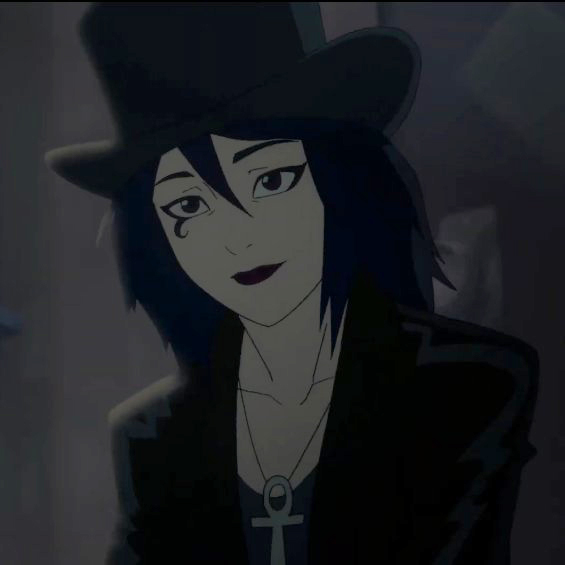
Frederik Wiedmann: This was a very special project for the director, Sam Lui, he reached out to me early on, before we ever got to the first production, just to get my head spinning with ideas, and he laid out all the things that he wanted people to feel during that ending. Sam wanted me to very early on to think about this from a very different perspective. When I saw it I was just blown away by how poignant it was and how deep and emotional and also beautiful. That shot when the raindrops freeze and the camera assumes a position in the middle of the street looking up at Vincent’s apartment window—that just kills me. I was like, “wow this is the coolest thing I’ve ever seen coming out of DC animation!” I knew instantly that this was going to be a pulling-on-the-heartstrings type of piece, so I figured out a theme that you hear a few times that’s really Vincent’s theme, and then for Death there’s a theme, too, which is first heard when she approaches him in the bar. For her, it was almost like a hypnotic motive, something that was as still standing as the rain in that scene later on in the film. It repeats these few notes over and over again, almost like in a minimalistic way, as if time is standing still right at that moment. The idea was to give her a theme that will make everything slow down and you really feel like there’s a different presence; even though I didn’t want to give it away right then, but I think on a subconscious level it creates that effect. Later on when Vincent is in his room with her and he finishes the painting, it comes back and we go into this whole moment when you realize time’s standing still and that’s when the music makes a lot more sense. And then of course there’s his theme’s big moment, once the flames start to engulf the apartment and himself, that’s when his theme—which is a very emotional melody—really comes to soar and the cellos bring it out. We hear it again at the very end as the painting is revealed. We played around a lot where themes could go, where they can start, and I think looking back it was by far the most thematically-structured piece I’ve ever done for DC comics.
Q: Are there any plans for a soundtrack album to either WONDER WOMAN: BLOODLINES and DEATH?
Frederik Wiedmann: Not at the moment. It’s been a bit strange. Most record labels don’t seem to be interested in this type of stuff. I think the problem is that this stuff just doesn’t sell enough to warrant release; that seems to be the biggest problem. I understand it’s a process and it costs money for mastering and for artwork and such. For now, since I’ve done so many of these and have released a bunch of them on CD already, I’m ok with keeping some of them only in conjunction with the film and people can enjoy in that environment. But if an opportunity comes up I’d certainly be happy to talk about it.
Q: Are your superhero scores for DC recorded with orchestra?
Frederik Wiedmann: We record a 30-piece orchestra on all of them. It’s always an L.A. orchestra, which is really nice; we get to do a session in town with union musicians. I think it really elevates the music tremendously—even though we don’t get to record every single cue, for budget reasons; the majority and especially the pivotal important pieces are always recorded with 30 or 32 players. I think it makes a world of difference.
Q: Generally, how much time to you have to score one of the DC animation movies?
Frederik Wiedmann: It’s pretty much a steady six-week turnaround. We spot, then I compose for four weeks, get everything approved and then there’s two weeks of prep and orchestra recording and mixing, and then we’re done.
Q: When you’re scoring one of them, how far along in the animation production process when you need to begin scoring? Do you have completed animation to look at, are you working with animatics [animated storyboard], or..?
Frederik Wiedmann: In most cases it’s pretty much done. Sometimes they have a few of what they call retakes to do, which means they ask the animation studios to redo a few shots because something wasn’t quite right, but in general the cut length doesn’t change much, if at all, and the animation is pretty much there. I think there was only one movie I’ve done, which was the first one, FLASHPOINT PARADOX, where they were a little behind on the animation part and there were still a few animatic shots in what I was working with, which is the very early stages of animation where things barely move and it’s just black-and-white. In most cases it’s done. In things like THE DRAGON PRINCE, since it’s 3D animation, the final lighting is often not quite finished, so often I’m looking at a black-and-white image of what I’m going to score. If you look at the show, some of those amazing, beautiful shots that they have painted, what I’m seeing doesn’t always do it justice, so it requires quite a bit of imagination to know where it might end up, visually.
Q: The giant spider movie ITSY BITSY gives you a credit with composer Garry Schyman, how did that come about?
Frederik Wiedmann: What happened essentially is that Garry scored the film and then many months went by and the movie got picked up by different producers, at which point I was brought in to help out with some of the newly-edited scenes. In the end, the score ended up a beautiful combination of both of our music cues.
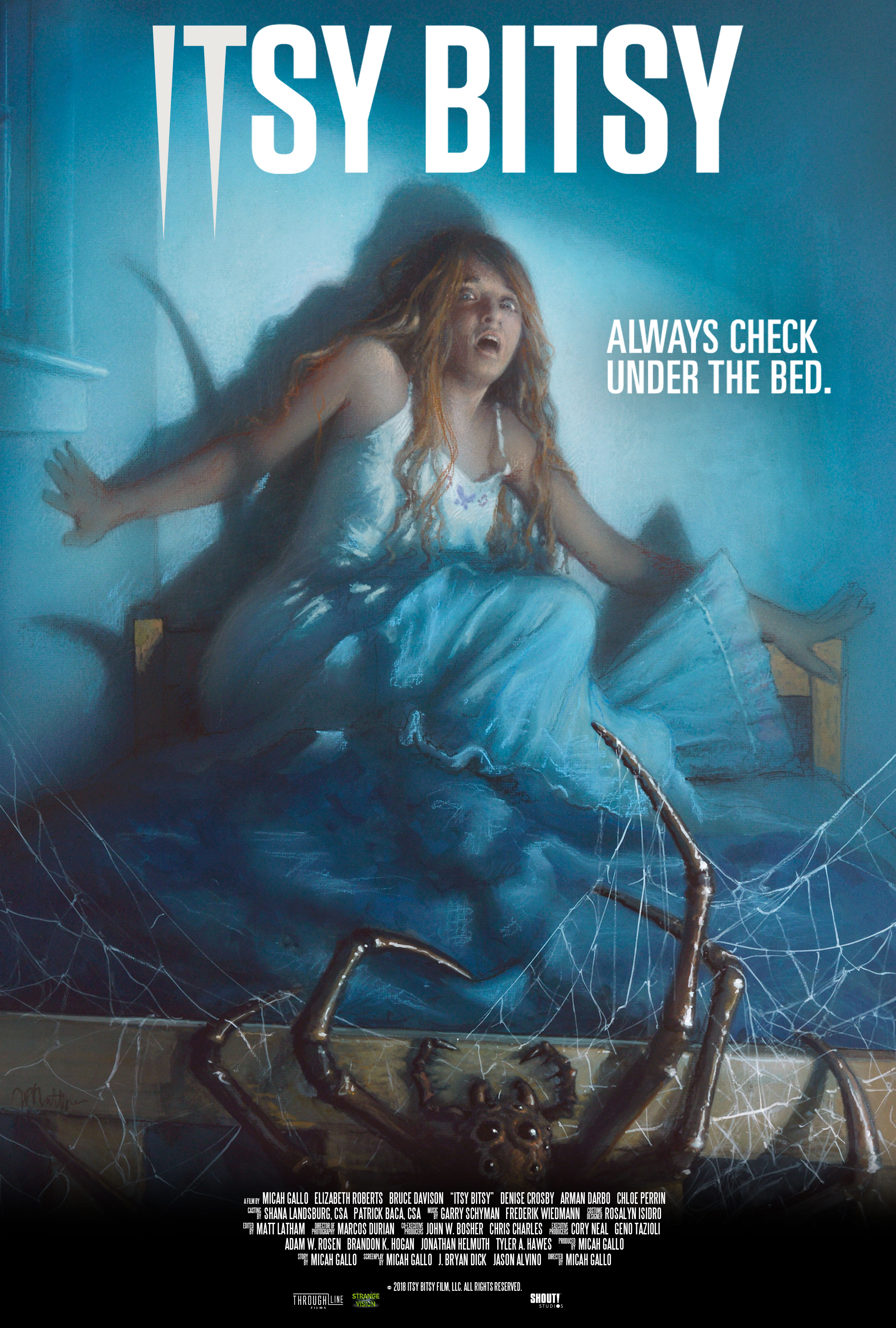
My perspective on this was how do give this spider a musical identity, so I took out my violin and started to experiment with making string effects only on one single string or two-strings together, but not a full orchestra. It’s very common to have orchestral string effects and brass effects and all of those discordant things, but I tried to recreate that with just one violin. I miked it very close to the body of the instrument to get this really hard and in-your-face scratchy sound, which after I experimented with it for a while I realized it sounds very spidery! It’s almost like that musical element introduces the spider without us actually seeing it, so that became our—for lack of a better term—JAWS element that we can sneak in anytime we are in the spider’s point of view or when the spider is nearby but we don’t see it. It was a cool musical signature that I was able to use throughout the film to suggest the spider’s presence.
Q: Last year you scored a number of sequel films, such as THE SCORPION KING: BOOK OF SOULS and then DEATH RACE 4 [DEATH RACE BEYOND AGONY]. What was it like to get into those franchises and recognize what happened before but yet give both of these films your own musical take?
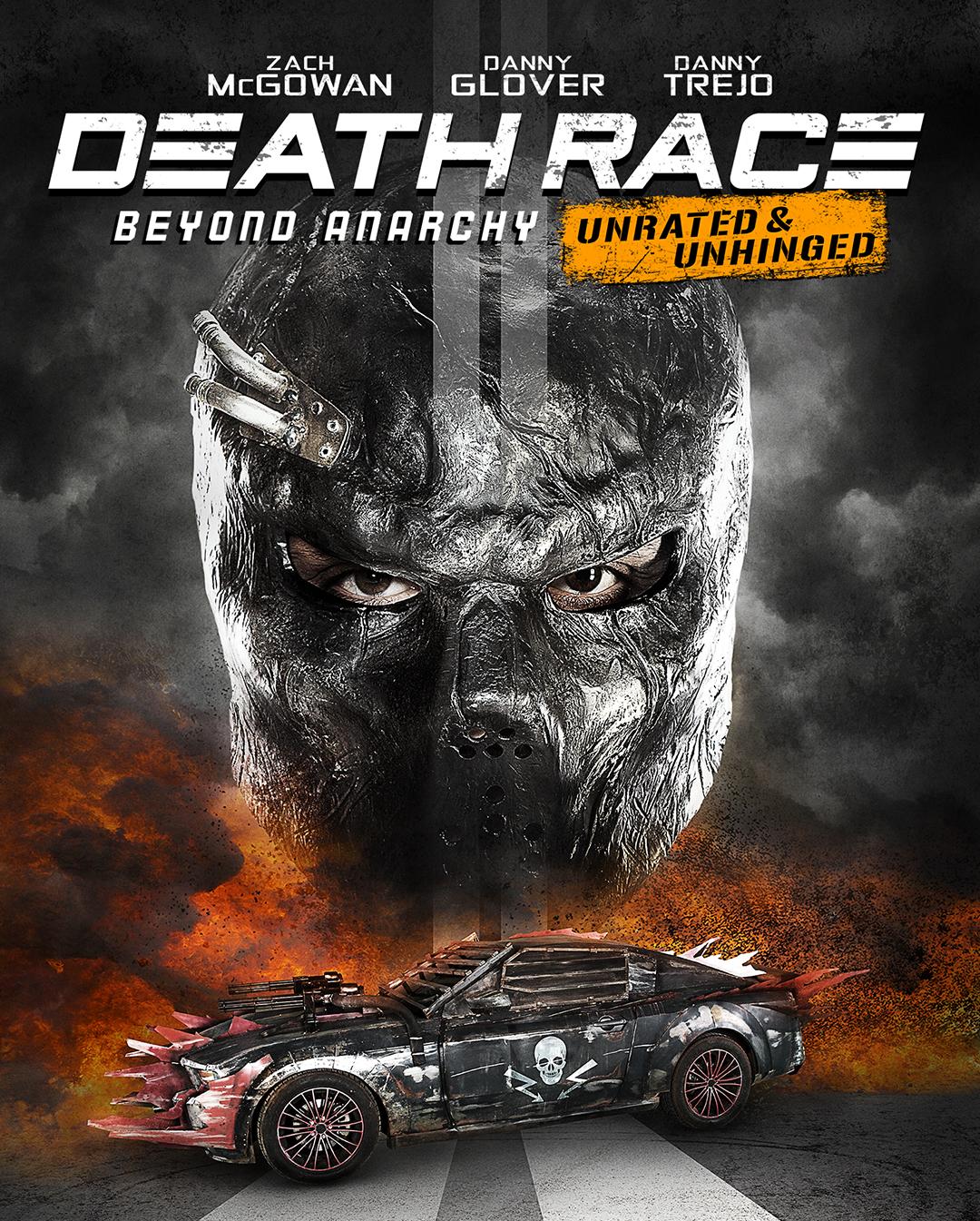
Frederik Wiedmann: You know, it’s interesting, I have done so many of these films—like you said DEATH RACE… I just finished a third JARHEAD sequel and I also just did DOOM: ANNIHILATION which is technically DOOM 3. On pretty much all of these they wanted something completely unique, because none of these movies have actually connected to the any of the previous ones. This applies to SCORPION KING as well. So it was really just starting from scratch and coming up with my own material throughout the whole movie. In DEATH RACE BEYOND AGONY [2018] there was Frankenstein’s theme, which is something Paul Haslinger wrote for his first DEATH RACE movie [2008], which is almost like a blues lick, it’s not very musical, so to speak—it’s not really a big theme, but it’s an iconic phrase that is used on the character of Frankenstein on the initial DEATH RACE remake. I was asked to bring that back in certain moments and make it bigger, make it smaller, make it more distorted for the character, because he was still a part of our story as well. So that was the only thematic element that I continued from the previous movies—and of course, in general the score’s tone is very much an adaptation of what was done before, this sort of industrial, edgy, percussive, slightly heavy-metal-influenced score that was part of the other three DEATH RACE films before us, that had to be kept within the same instrumentation, to keep the same vibe going throughout them.
Q: In contrast to the very mechanistic DEATH RACE score you’ve got the ancient SCORPION KING. How have you scored that character and his environment in 2015’s THE SCORPION KING 4: QUEST FOR POWER?
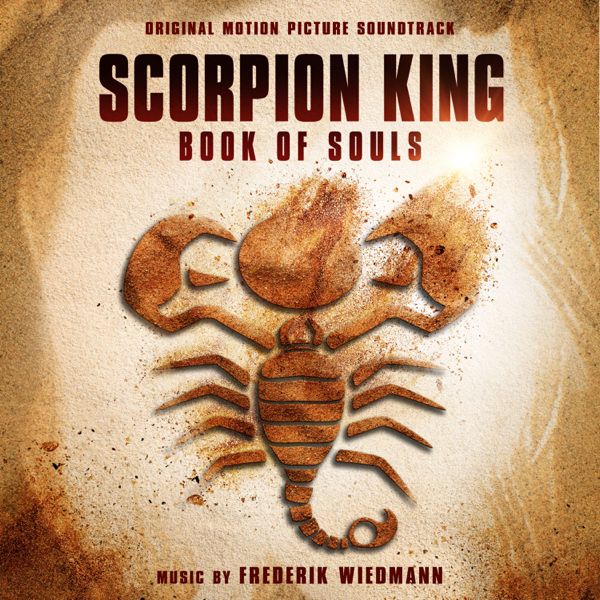
Frederik Wiedmann: That had to be one of those Egyptian orchestral scores with lots of themes and a lot of ethnic instruments. I had my players come in with a gazillion different woodwind ideas, even PVC pipes, things that you can’t play in unconventional ways. A lot of these don’t even have names, but they sound ancient and tribal. There was a big tribal element in the whole movie, of course, because it’s set in such an old time, so I had to revert to a lot of that stuff, which was fun to do—there’s a lot of heavy percussion, and I recall using a lot of voices in there, too, some choir and some solo vocalists throughout just to give it an ancient Egyptian feel as well as supporting the grandness of it, because it’s quite an epic story with duels and magic gates in the middle of the desert and things like that.
Q: I’m a big fan of the TREMORS franchise, and you scored both TREMORS 5: BLOODLINES [2015], which moved the franchise from the Nevada desert to South Africa, and then TREMORS A COLD DAY IN HELL [2018], which took place in the Canadian Arctic. What was it like taking on the new sequels and accommodating its new environment?
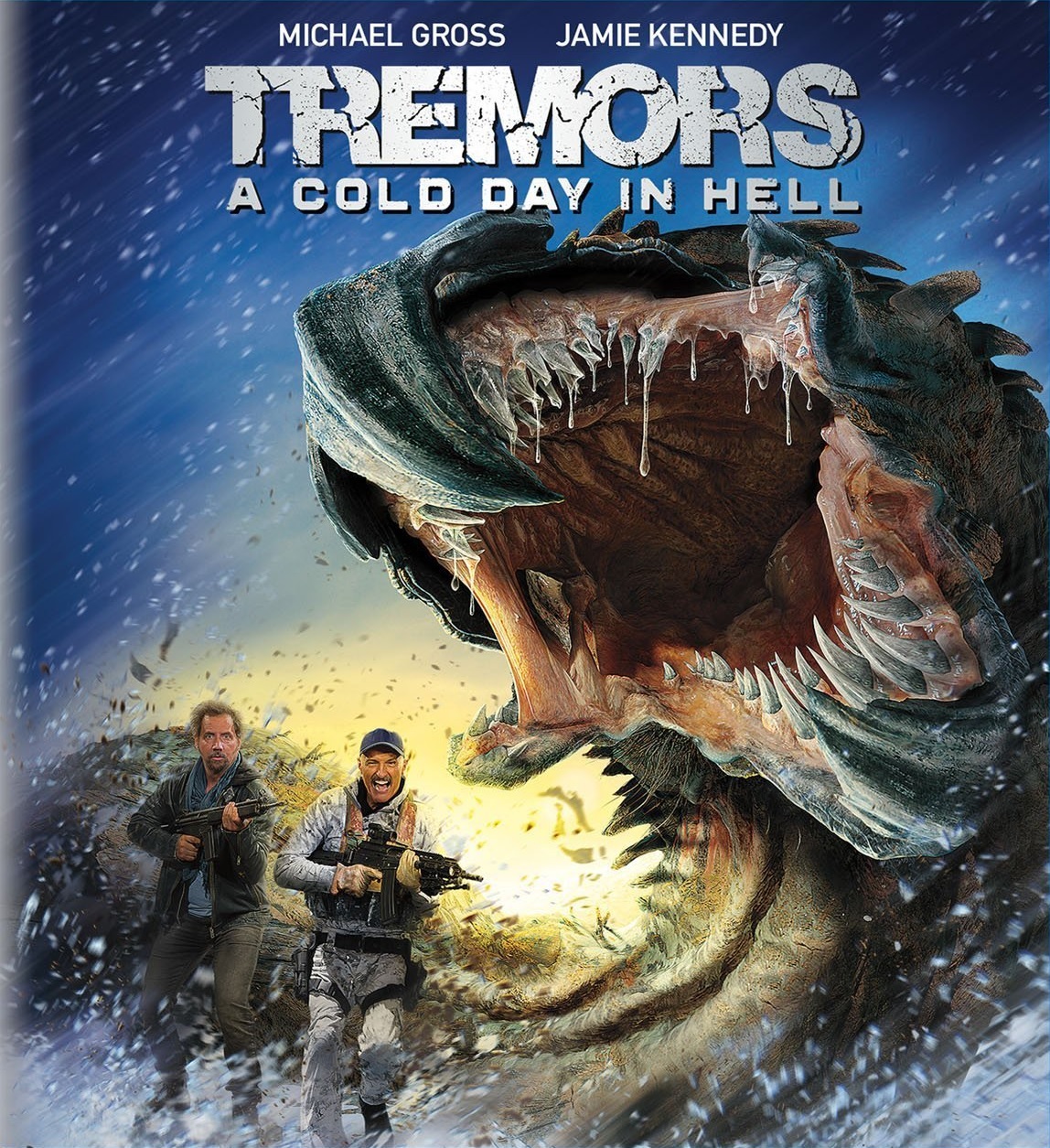
Frederik Wiedmann: Both of these films feature Bert Gummer, whose been with the franchise since it started, and introduced his son, Travis Welker in number five. They’re both hilarious together and it was nice to continue that from BLOODLINES into A COLD DAY IN HELL. They had kind of a Country-Western/bluesy vibe going on in BLOODLINES; it tended to underline the comedy of the whole movie, and I was able to maintain that through the latest movie as well. On top of that, of course, the music reflected the Arctic setting so the music took on a kind of bitter cold/horror feeling—I was thinking about films like THE THING and those movies and what they sounded like. It was a nice departure from the tribal African music that I had to compose for TREMORS: BLOODLINES to now go into the Arctic. Everything was a little more orchestral, a little more horror movie-ish in places. It was nice to take this movie to a whole different place, while maintaining the core musical identity for our main characters and continue their humorous back-and-forth banter as well.
Q: A fun project you did which was a spin-off but something you’ve definitely made your own, is ALL HAIL KING JULIEN, with some of the characters from DreamWorks’ animated MADAGASCAR series.

Frederik Wiedmann: That was a webseries from DreamWorks animation that ran something like 76 episodes. That was a long project; I worked on that for five seasons over three years, and it was an absolutely amazing experience because the show is really funny and as it progressed through the seasons it constantly pushed the envelope on what they could do with the scripts, and things became so much more absurd and over the top, which then makes it even funnier. For me, it was a fun project in the sense that the music was a big part of the jokes. When there was a horror scene it’s a massive horror scene; if there is a cheesy love ballad between Maurice, the Royal Advisor and King Julien, it had to be the cheesiest love melody you can imagine with the whole reverb-saxophone-played-in-the-moonlight kind of thing! So everything was pushed to the extreme story-wise as well as musically, just to make the jokes funnier. I’m a total sucker for that kind of comedy so for me that was a heavenly playground to play in. That was a fun three-and-a-half years to work on this show continuously. On top of that I wrote a good amount of songs for that, which the characters sang on screen—I think a total of 35 songs over the course of the six seasons—we even won a Daytime Emmy for one of songs—in fact it was the saxophone-in-the-moonlight song! [“Bromance” from the 2015 episode: “True Bromance”]. Sometimes comedy is where it’s at!
Q: When you first started with the original season, did they want to keep the story separate from the MADAGASCAR series..?
Frederik Wiedmann: Actually, they wanted me to continue the musical identity of that. Not anything thematic but that had me listen to Hans’ MADAGASCAR score, which is very string-heavy with some tribal percussion and as little bit of an African influence, but that’s really it. There is not a whole lot of special things to it—and I don’t mean that in a disrespectful way, but it’s not like an identifying rock score, it’s just a nice orchestral animation score with some tribal elements. So continuing that wasn’t very difficult, it felt very natural and fit right into our universe as well.
Q: You’ve recently scored a horror film called PURE, part of the INTO THE DARK series on Hulu. How did that come about?
Frederik Wiedmann: INTO THE DARK is a Blumhouse TV production, and each episode is a standalone original movie that deals with or takes place on a specific holiday or a certain day during that month. In my case I got the chance to work on the one about Daughters’ Day, which was made by one of my favorite filmmakers, Hannah Macpherson, who I’ve done a TV thriller called T@GGED with a few years ago. PURE became a big passion project for all of us, because the story was important for this day and age, empowering young girls standing up to their insane fathers during this kind of cultic ritual of a “Purity Ball” in the forest, kind of a retreat with priests who carry guns and things like that. So it was a really interesting horror movie, because you’re constantly in this beautiful environment surrounded by this amazing forest, everything’s green, there’s lakes, there’s animals and the girls are wearing white and making flower crowns for themselves; it’s almost a little bit like MIDSOMMAR—in fact one of the reviewers actually titled his review saying “It’s like HANDMAID TALES Meets MIDSOMMAR,” which is exactly what it was. I’m a fan of both of those so when I saw that review I said “Yes! We’ve accomplished our mission!”
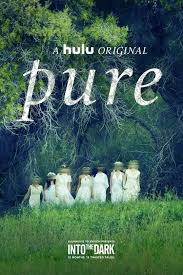
For the score I bought a cello, and I’m not a cello player at all, I never really studied it, but I just spent some time with the cello and a microphone in my studio and I came up with these very organic wooden-sounding drones and phrases and effects on this instrument that I thought represented very wall this nature surrounding that the film takes place in but in a very twisted and discordant kind of way. It became our main element throughout the score, and it worked nicely and felt like a really way to acoustically treat the deceptive beauty of this horrific situation that these girls are in.
Q: In 2019 you have, so far, ten or more, films or videos or series that you’ve worked on—or at least found release in 2019. How do you manage your schedule for all of these projects while maintaining your sanity?
Frederik Wiedmann: It looks like more than it actually is—a lot of movies are finished but don’t come out for six months or so. Many of these I actually finished in 2018 and they just took so long to be finally released. Schedule-wise, it’s quite the miracle how it usually works itself out. I tend to say yes when I get the call, because in most cases it’s a returning client of mine or a good friend/director who I don’t want to say no to. And even if at that moment it may seem impossible to get it done, it somehow always magically works its way through, like suddenly this movie is delayed or this one is done faster than anticipated and then there’s room for the next one. So far everything fallen nicely into place so I can work on them with the full focus they deserve and all hands on deck, without having to compromise in any way and without losing my own sanity and still being able to see my family!
Special thanks to Andrew Krop at White Bear PR for assistance with this interview.
For more information on the composer see his website at http://www.frederikwiedmann.com/




